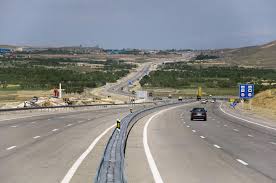Given Iran’s geographic proximity, the transit and transport potential should be developed to substitute oil income, Vice-president of Tehran chamber of commerce transportation commission, Fatemeh Mogheemi said in an interview with ISNA news agency.
Iran is located on the path of some of the world’s most strategic transit routes, she said, referring to Iran’s north-south and east-west corridors, the silk road, the pearl road, Strait of Hormuz, in addition to access to open seas and 15 neighboring countries (by land and maritime borders) as great opportunities for developing transit potential.
“With proper government management, transportation capacities could be utilized to replace oil revenues,” she said.
Referring to Inche Boroun railway, connecting Iran to two Central Asian countries of Turkmenistan and Kazakhstan, as the most important achievement in transportation over the past one year, she called for developing Iran’s rail and road network with the Commonwealth of Independent States (CIS) including Russia, Belarus, Ukraine, Azerbaijan, Kazakhstan, Kyrgyzstan, and Armenia to boost the country’s transportation activities.
“Progress in the transit sector could boost profitability, employment and security,” said Mogheemi, adding that development of transportation routes could also help improve political relations between Iran and other countries.
Nearly 11,281 million metric tons of goods were transited through Iran’s borders during the first 11 months of the current Iranian year (to end March 20), recording an increase of nearly 6.2% compared with the similar period last year, head of Road Maintenance and Transportation Organization (RMTO), Mohammad Javad Atrchian announced last week.
Oil-based commodities accounted for 5.97 million metric tons of transported goods while non-oil commodities such as home appliances, chemical products, vehicles and construction materials accounted for 6.183 million metric tons of the total goods transported during the period.
Bandar Abbas was the most active transit terminal during the period, having registered 3.1 million metric tons of transit cargo, followed by Bashmaq and Bazargan border points.


